Putting together an AR-15 lower receiver isn’t all that hard. Here are some instructions for assembling your own AR-15 lower by yours truly, for example, just to show you how easy it really is. But for the less mechanically inclined among us, that may not be an option. Thankfully, for people who don’t want to assemble their own lower but still want to be able to build their own custom rifle, Franklin Armory has just the ticket . . .
Quick overview time: the AR-15 platform comes in two halves, an upper and a lower. The upper consists of the barrel, handguards and sights. The lower, on the other hand, has the operating controls for the weapon, the trigger, and the magazine well. And while the actual “gun”-like parts are in the upper, it’s the lower that is legally the firearm.
Most people are content to buy the uppers complete, since putting on a barrel is slightly complicated. But something that’s gaining popularity is to buy a “stripped” lower receiver and put it together yourself. It’s a bit of a pain, but it gives you the option to use better components than are typically included in lower-end AR-15s.
Franklin Armory’s built lower comes from the factory with all of the buttons and switches pre-installed, as well as Franklin’s own single stage trigger which is one of the finest single stage triggers I’ve ever pulled. Seriously, this thing beats the pants off the ALG Defense triggers with their Geissele tuned goodness — a clean, crisp break with no detectable creep and a very short reset.
The one thing the lower doesn’t normally come with is a stock (FA’s opinion is that you can buy your stock of choice on your own and save the hassle of swapping out a pre-installed model), but you can get one pre-installed as well if you really feel the need.
While the trigger and the pre-installed gubbins are nice, the biggest draw for this particular product is the lower receiver itself. Franklin Armory designed this billet lower themselves and produce them in house. They have a bunch of nice features above and beyond the standard forged lower.
First things first: billet versus forged. Forged lowers are usually pressed when red hot and then machined into shape. Billet lowers are machined from a solid chunk of metal. There’s a belief that billet lowers are stronger and machined to tighter tolerances and this one sure lives up to the hype. The second you slide it onto the upper, you notice that there’s no moving or wiggling between the upper and the lower like you get in some of the cheaper AR-15s.
Speaking of features, the billet lower comes with a permanent trigger guard that’s been enlarged compared to the standard size, and an interesting cut along the side of the magazine well for the shooter’s trigger finger to rest. It’s a nice way to give the shooter some positive feedback that their finger is safely in the right position other than resting it on the magazine release.
Another interesting feature is the QD mount that’s built right into the lower itself. This little hole allows the shooter to attach a single point sling directly to the lower without needing to change the backplate on the gun. It also keeps the sling attachment point away from the hand, which makes the gun much more comfortable. Plus, it just looks nifty.
Speaking of nifty features, the front of the lower has some stippling on it which helps when using a “magazine well” grip on the gun. I could take it or leave it, but its an interesting feature nonetheless.
The other nice feature is an exaggerated flared magazine well. The idea is to give a larger target for the shooter to hit when trying to slap a new magazine into the gun, and while the flared well does help, it isn’t quite as helpful as you’d imagine. And this is the only thing I really don’t like about the lower — the flare is too steep to really help guide the mag into the slot. Also, the edges are sharp enough to shave some of the magazine off each time it slots in. A little more slope to the sides of the flare and a little more rounding on the magazine well edges and you’ve got yourself a damn fine lower.
So what’s my opinion of the Franklin built lower? I think its great. It’s a step up from the “standard” AR-15 lower with some great features of its own, and comes with a great single stage trigger. I really like it, and if I needed a new rifle, this would be what I’d use for its lower.
Franklin Armory Billet BLR
Specifications:
Caliber: MULTI
Buffer Tube: Commercial
MSRP: $479
Ratings (Out of Five Stars):
All ratings are relative to other similar guns, and the final score IS NOT calculated from the constituent scores.
Ergonomics (Handling): * * * *
Not only does it fit well in the hand and have some great features that provide immediate benefit in terms of handling, it’s well thought out in giving you options for mounting points that won’t interfere with your grip. Fix the magazine well flare and you’ve got yourself a deal.
Ergonomics (Firing): * * * * *
Great grip, great trigger, great lower.
Overall Rating: * * * *
I said it before, and I’ll say it again: if I was building a new rifle, this would be the lower I’d pick. If they made a slight change to the flare in the magazine well this would be a five star review. As it stands it still beats the pants off my existing lowers. I wonder if they’ll give me a discount . . .
Full Disclosure: This lower was provided by Franklin Armory for the purposes of this review and is currently en route back to FA.
Special thanks to Dutra Arms in Spring Branch, TX for doing the transfer!

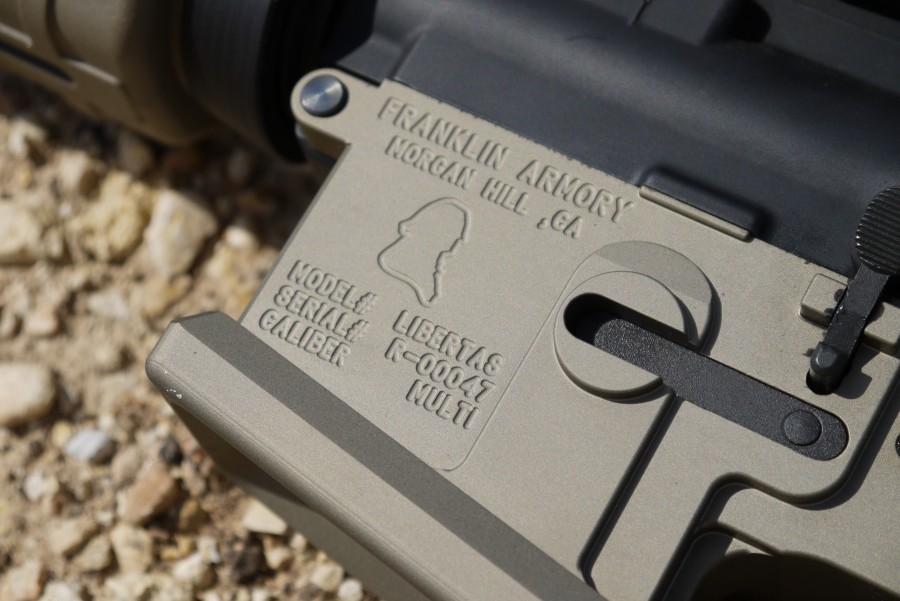
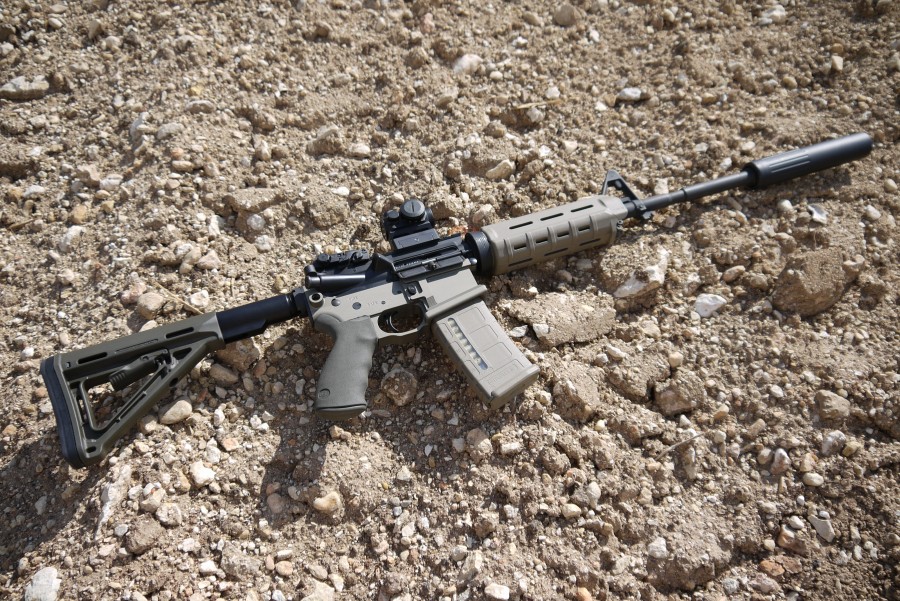
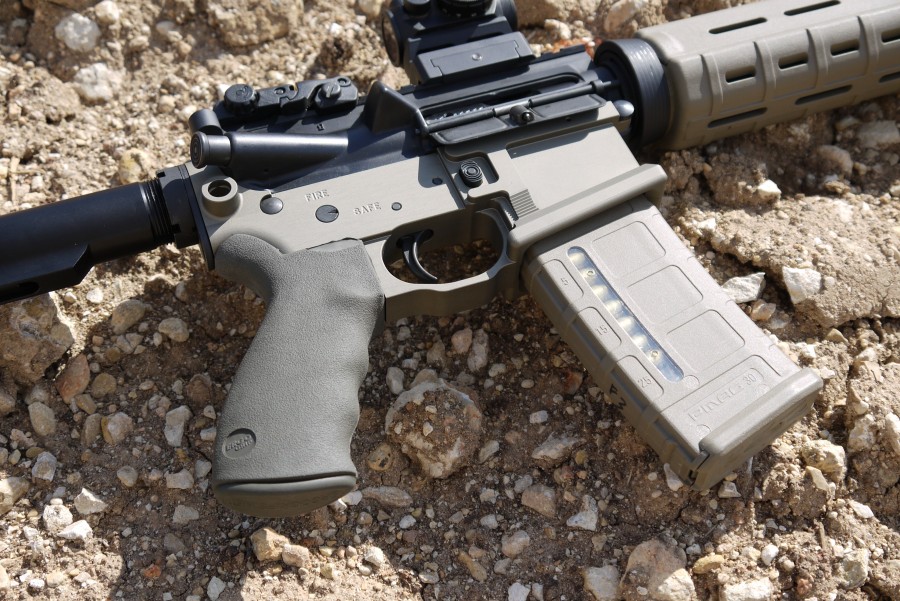

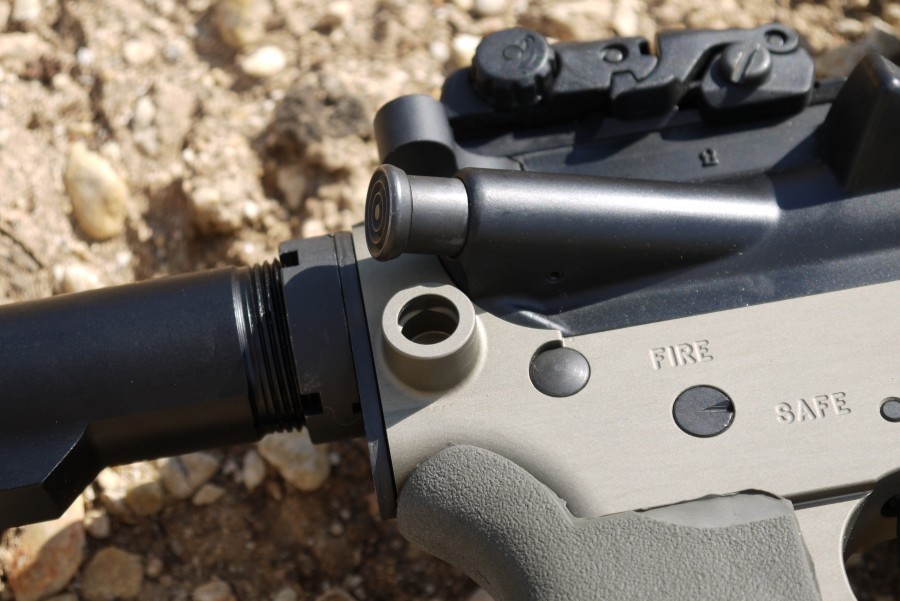
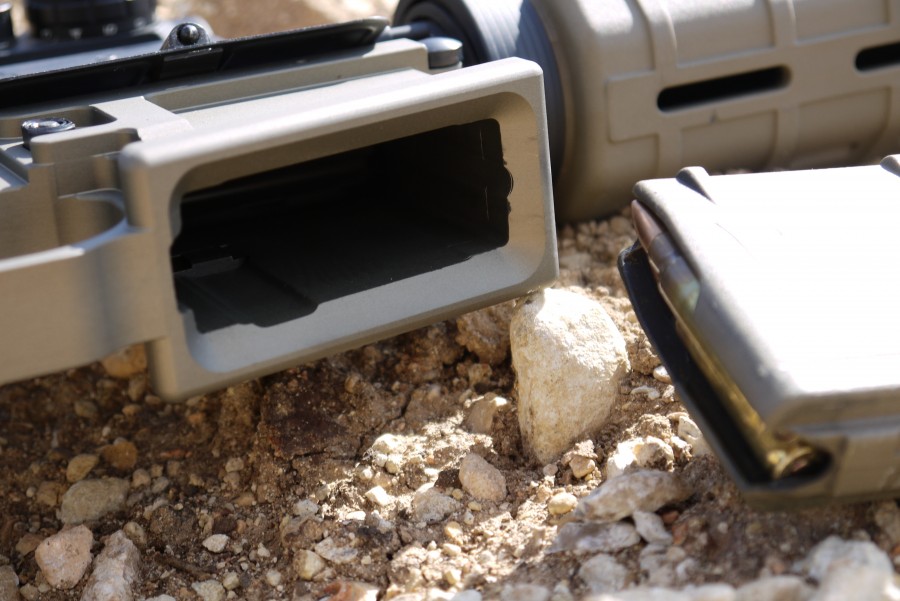
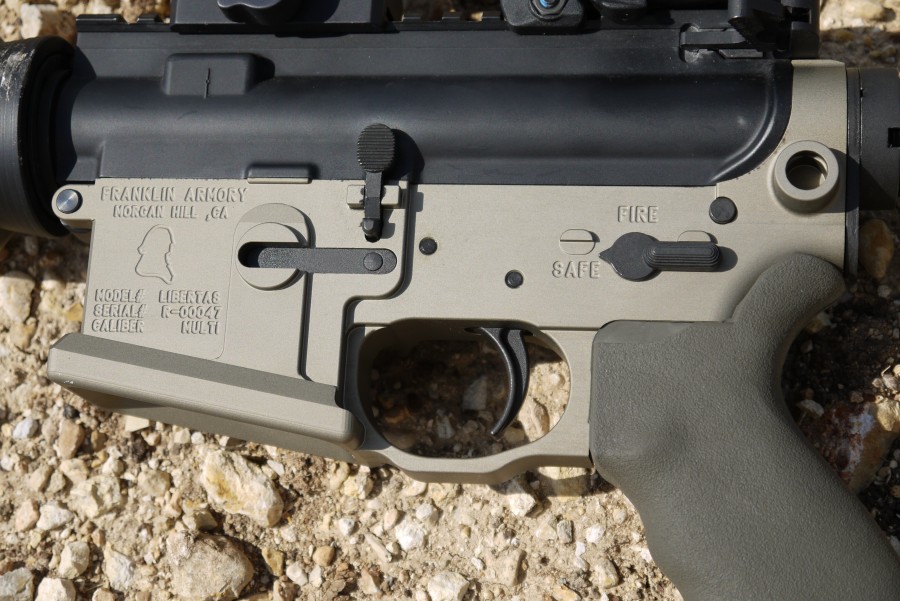

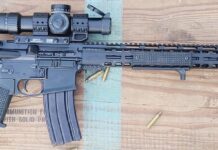

Looks like a POF, Mega, Noveske, Spikes, ect… billet lower but with a huge flared magazine well. Wouldn’t you recommend something else since you said you didn’t care for the flared magazine well? Besides the QD mount, which I dig, I don’t see how it beats the pants of the plethora of other billet lowers the market. What’s the pricing look like?
Never mind, I’m a nitwit, didn’t realize it’s a complete lower and the trigger was per-installed. I shouldn’t make comments after just waking up… yeesh.
no worries Jon, I am just getting my second cup of joe over here too!
Not that it matters on a lower (see Tyler’s review of a polymer lower a few weeks back), but generally, all else being equal, forged is usually stronger than billet because the forging process aligns the grain of the metal (think forged wheels, etc.).
The bigger difference is that the capital requirements to build a CNC lower (CNC machines) is much lower than that to build a forged lower (hence why most forged lowers are just private-labeled from a handful of manufacturers).
Agreed on the metallurgy part. Also to CNC a part from a huge block of metal costs more, but then again you can get some very clean precise pieces this way too. It also depends on how hot you run your CNC machine.
Slow and cold is the way to go, but your volume is lower. Cleaning up a forging on a CNC is much faster and easier overall, but both methods work.
My uncle used to work in the Oakland ship yards during the war. He built custom tools used on the air craft carriers launching systems as well as other items. He had his own work shop and took his time. He would watch the seagulls and smoke a cigarette. The other guys would see him lolly gagging around and scream why is he so lazy. The shop managers response was because he makes the model the rest of you guys use, and it has to be perfect in every way.
Perfection from a machining stand point takes time. Heat causes metal to expand and contract, and you need to account for this. Different metals act differently. I don’t know if one is better than the other when it comes to putting lead on target down range, but then again a Ford will get you from point a to point b just like a Ferrari will, but you probably won’t turn as many heads in the process. 😉
Unless it’s a Shelby Cobra 427, GT40, RS200, … 🙂
Wow and all this from a company not 20 minutes from my work!
I have to say billet like in cars is the cats meow. The finish on the lower looks stunning as well! It looks anodized as apposed to powder coated. This allows the milling process to be even finer. The flares and enlarged areas are always a good thing, and the final product per your comments is much cleaner, with no wiggle, or sloppiness.
If I am correct most other lowers as mentioned are forged. I know some do billet, some don’t.
The QD is a nice touch and I like the enlarged trigger guard. Ok it looks different.
Then again some of us jumped on the Jolly Roger or Biohazard spikes lowers because they looked cool lol
I need to call them and take a tour of the plant since they are so close. I know they have been upping their production over the last couple of years. I think it is time to drop by and say hi. 🙂
Again with the “billet” thing.
Sigh.
OK, here’s a video on forging aluminum:
https://www.youtube.com/watch?v=678dcCTI0c8
Two things to NB:
1. See those big round/cylindrical pieces going into the furnace? THOSE are billets. What gets machined into a lower isn’t a billet, it is flat or rectangular stock, which is post-billet.
2. NB in the forging operations that aluminum isn’t “red hot” when it is forged. Aluminum doesn’t give off any indications from color how hot it is. It just suddenly melts…
Just purchased my first AR, a Sig RM400, and didn’t know what those round protrusions were on the back of the lower, thanks for the heads up on QD mounts, and yes I’m a noob. It seems my M-16 forty some odd years ago didn’t have that little accessory!
Nick, a somewhat related question, since we are talking about AR’s. I’ve looked through the archives of TTAG on this particular piece of information until well I couldn’t look any more. So, what is the preferred twist for the 300 Blackout, I couldn’t find a link in all of the articles here? And yes I would imagine it matters on what bullet weight was used, but generally speaking. Thanks!
MSRP $479?
Call me cheap.
My last lower (this spring) was $65 + 15 mins of work + taking out the trash so the spousal unit would lend me a third hand putting in the detent pin.
read the article a little more carefully.
Hi,
I’m a bit new to ARs and am working on a theoretical .450bm build.
The BM upper is millspec, would it fit on this lower with the buffer tube being comercial?
Er, Matt, what is a comercial buffer tube? Sorta like “funny business” perhaps?
At Zack:
My understanding is that AR lowers come in two general categories (mostly differenciated through the length of the buffer tube.)
Millspec and Comercial length to be precise.
I know “Comercial” is kinda of a missnomer when we’re talking about a comercially produced item, but in this case it’s a real question.
My confusion in this regard stems from the fact that I thought the only consideration I needed to worry about with different lowers was whether the stock would fit.
Now, I find that my upper is designed for a Millspec lower…so I’m asking whether I can use the upper with this lower before I drop 5 c notes on it.
Commercial and mil spec does not really apply to uppers and lowers. I think you are confusing just the tubes. A commercial buffer tube will only work with commercial stock, and mil spec with mil spec stock.
When someone says mil spec upper, they are talking about it being certified to military standards (which does not mean it is better than a non mil spec upper, it just means it has a specific type of barrel coating, etc), but does not make the size or shape different. Basically, all uppers should work with all lowers, if you get a lower with commercial buffer tube, you can buy a new mil spec buffer tube and change them out without any issue. Also, most stocks come in either commercial or milspec so that should not need to happen.
So whose right? Is it possible or not? It is possible. You are going to argue with me over the definition of “full-auto”, but it is certainly possible to achieve similar performance to full auto by modifying an AR15. The AR15 was purposefully built to not accept the trigger groups, sear and action parts of a M16 to make it full auto without serious machining. However, that does not mean that there are not ways to do it and achieve higher performance. Lightning Links, Hellstorm Autotriggers and Slide Fire stocks are all easy enough to come by and will get the job done. Slide Fire™ – Superior Performance Gun Stocks http://anvilsandinkstudios.com/AR15L…gLinkPlans.pdf Full-Auto Trigger Attachment – Fast Fire Trigger Attachment – Bump Fire Trigger Attachment – Trigger Attachment You can google it and get endless pages of these things for sale and videos of them being used, they are also widely discussed on gun forums. The weapon is still legally “semi-automatic”, but it allows a MUCH higher fire rate then one could achieve on their own.
I would have included an ambi-bolt release in the design, it is one of the major flaws in the AR design
I am very happy with my Franklin Armory SBR, but not its lack of online info. I love the form factor of the Franklin, but since there is so little available online about their carbines, especially the M4-SBR-L, I posted some pics of the rifle in its own blog. Enjoy.
http://franklinarmory.blogspot.com
I’ve been looking at getting the 14.5″ SBR upper assembly, which comes with a blem billet lower for free. I’d like to get the lower in desert smoke but i can’t find a picture that seems to accurately display the color. In your picture it looks like a light gray / tan and others it looks like it’s dipped in gold. I’m just curious what the actual anodized color for desert smoke is.
I like this web site so much, saved to bookmarks.
Sienna Miller, a stunning and lovely actress, is well-known among fans for her great design sense. Further, this time, we launched Anatomy Of A Scandal Sienna Miller Poncho, as part of our ongoing effort to present her with creative collections. Furthermore, In the Anatomy of a Scandal series, Sienna wears this outfit.
Comments are closed.